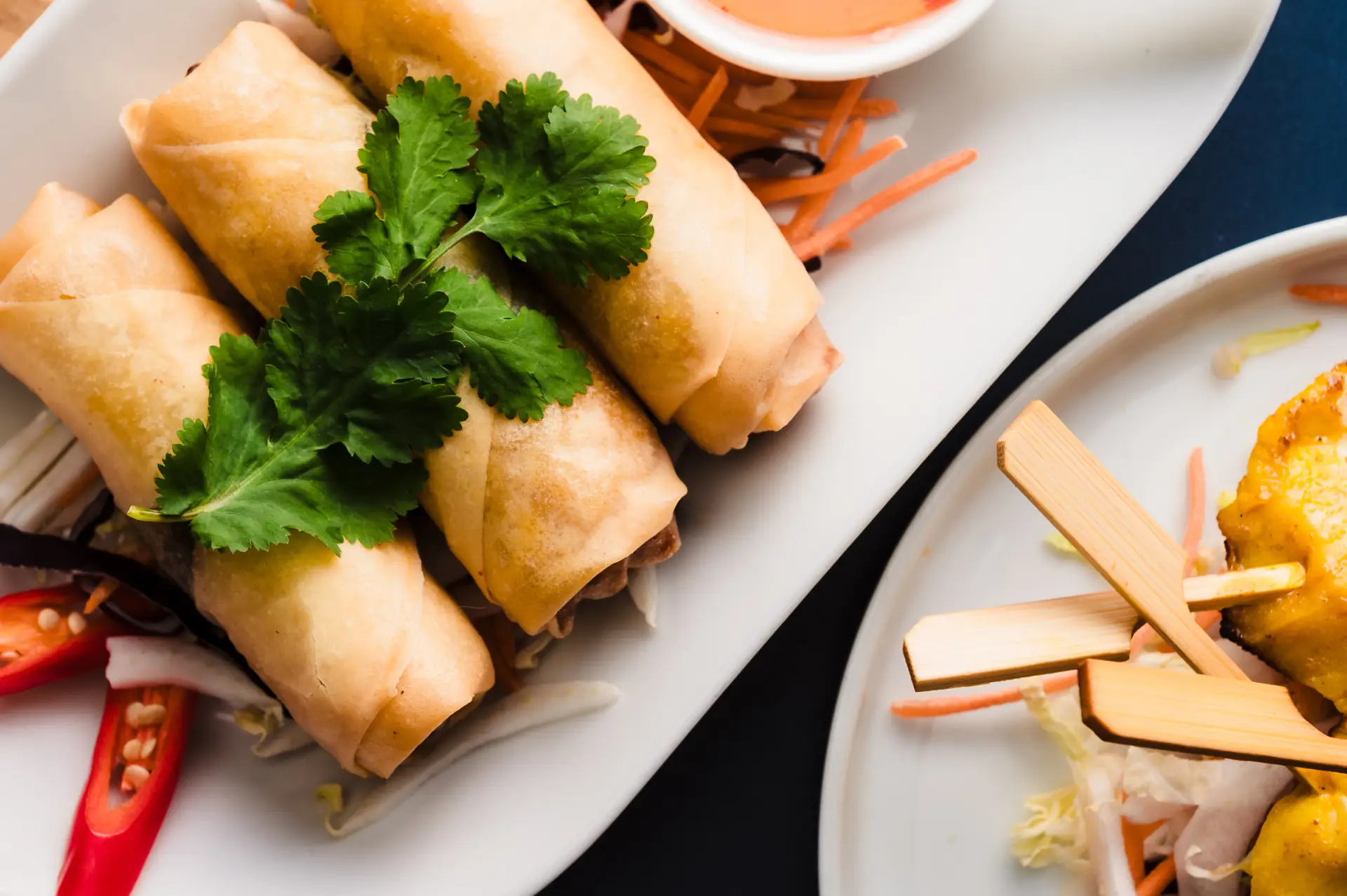Which Thai curry should you choose?
When people think of Thai food, curry is often one of the first dishes that springs to mind. Rich, fragrant, and deeply comforting, Thai curries are complex yet beautifully balanced – each with its own unique colour, flavour profile, and level of heat.
But not all Thai curries are created equal. So, what’s the difference between red, green, yellow, and the lesser known but equally beloved Panang and Massaman? Let’s take a closer look at what sets them apart.
Red Curry
Spice level: medium to hot
Red curry gets its name and bold colour from dried red chillies. These are soaked and blended into a paste with a blend of classic Thai ingredients like garlic, galangal, lemongrass, kaffir lime, coriander root, and shrimp paste. The result is a full-bodied curry that’s spicy and rich but not overpowering.
Red curry is typically cooked with coconut milk, which tempers the heat and adds a silky, slightly sweet richness. Flavours are bold, with a noticeable depth from the roasted spices and a pleasing balance of salt, sweet, and spice. This is a go-to curry for anyone who enjoys a bit of heat without going overboard.
Green Curry
Spice level: medium
Green curry is all about freshness. It’s made using young green chillies (rather than dried ones), which gives the curry its signature colour and a slightly sharper heat. The paste also includes ingredients like lemongrass, galangal, kaffir lime peel, garlic, shallots, coriander, and Thai basil.

What makes green curry unique is its herbal aroma and slightly sweeter edge, thanks to fresh basil and the natural sweetness of coconut milk. It’s considered one of the most fragrant Thai curries – light, creamy, and bursting with layers of green, citrusy flavour.
Though it shares similarities with red curry, green curry tends to be brighter and a touch more vibrant, with an emphasis on aromatics over depth.
Yellow Curry
Spice level: mild to medium
If red and green curry are cousins, yellow curry is more of a distant (but very welcome) relative. Inspired in part by Indian curries, yellow curry has a warm, mellow flavour and a beautiful golden colour that comes from turmeric.
The paste typically includes turmeric, cumin, coriander seeds, garlic, lemongrass, galangal, cinnamon, and dried red chillies – but far fewer chillies than red curry, which makes it much gentler on the heat scale. It’s often slightly sweeter too, with a creamy coconut base and hints of warming spice throughout.
Yellow curry is ideal for anyone who prefers rich, soothing flavours over serious heat. Think of it as comfort food with a Thai soul.
Massaman Curry
Spice level: mild to medium
Massaman curry is unlike any other Thai curry. Heavily influenced by Persian and Indian cooking, it features a spice blend that includes cardamom, cinnamon, cloves, nutmeg, and star anise – giving it a warm, almost autumnal feel.

Massaman paste also includes traditional Thai ingredients like galangal, lemongrass, and shrimp paste, but the result is something slower, deeper, and slightly sweeter than your typical Thai curry. It’s finished with tamarind for a touch of tang and roasted peanuts for added richness.
Massaman is a great choice when you’re craving something hearty, earthy, and just a little different.
Panang Curry
Spice level: mild to medium
Panang curry is rich, nutty, and deeply comforting. It’s made with a red curry-style paste but with the addition of ground peanuts, which give the sauce a thicker, creamier consistency. The heat is gentler too, due to the reduction in chillies used, and there’s often a noticeable citrus note from finely shredded kaffir lime leaves stirred through at the end.

The result? A curry that’s rich and indulgent, with a perfect balance of sweet, salty, and aromatic flavours. Panang is less soupy than other curries – often more like a thick, spoon-coating sauce – and its creamy texture makes it a crowd-pleaser for those who want flavour without too much fire.
Final Thoughts
Thai curries are a masterclass in balance. They bring together spice, sweetness, creaminess, and aromatic herbs in a way that feels both bold and refined. Whether you like it hot or mellow, sharp or comforting, there’s a Thai curry to suit your mood.
And now that you know the difference between them, the only question is – which one will you try next?





